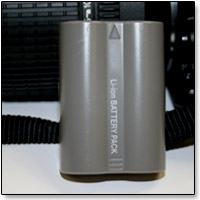Tip of the Week Archive
Safe Air Travel with Batteries and Devices
Sponsored by:

Safe Air Travel with Batteries and Devices
Tip written by: Infraspection Institute
Many electronic devices including infrared imagers are powered by lithium batteries. Effective January 1, 2008, US Department of Transportation regulations prohibit loose lithium batteries in checked baggage onboard aircraft.

Spare batteries, also called “loose” batteries, are batteries which are not installed in equipment. A lithium ion battery inside your computer is an installed battery. A battery you carry separately in case that battery runs low is a spare battery.
Effective January 1, 2008, you may not pack spare lithium batteries in your checked baggage. You may pack spare lithium batteries in your carry-on baggage. The following are tips for packing spare batteries:
- Pack spare batteries in carry-on baggage. In the passenger compartment, flight crews can better monitor safety conditions to prevent an incident, and can access fire extinguishers, if an incident does happen.
- Keep spare batteries in the original retail packaging, to prevent unintentional activation or short-circuiting.
- For loose batteries, place tape across the battery’s contacts to isolate terminals. Isolating terminals prevents short-circuiting.
- If original packaging is not available, effectively insulate battery terminals by isolating spare batteries from contact with other batteries and metal. Place each battery in its own protective case, plastic bag, or package. Do not permit a loose battery to come in contact with metal objects, such as coins, keys, or jewelry.
For personal use, there is generally no restriction on the number of spare batteries allowed in carry-on baggage. This is the case for cell phone batteries, “hearing aid” button cells, and AA batteries/AAA batteries available in retail stores, as well as almost all standard laptop computer batteries.
For some devices, lithium batteries are permitted in checked luggage provided they are installed in the device. If you pack a device containing batteries, secure it against activation by locking the activation switch in the “off” position, placing the device in a protective case, or by other appropriate measures.
For more information, visit the TSA website.
Advertisement

